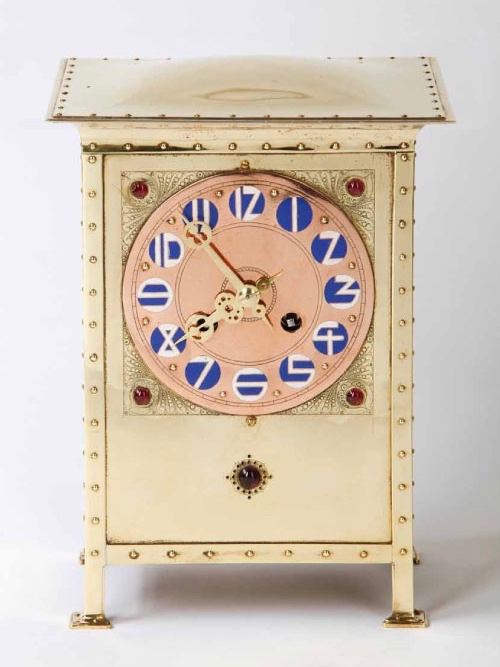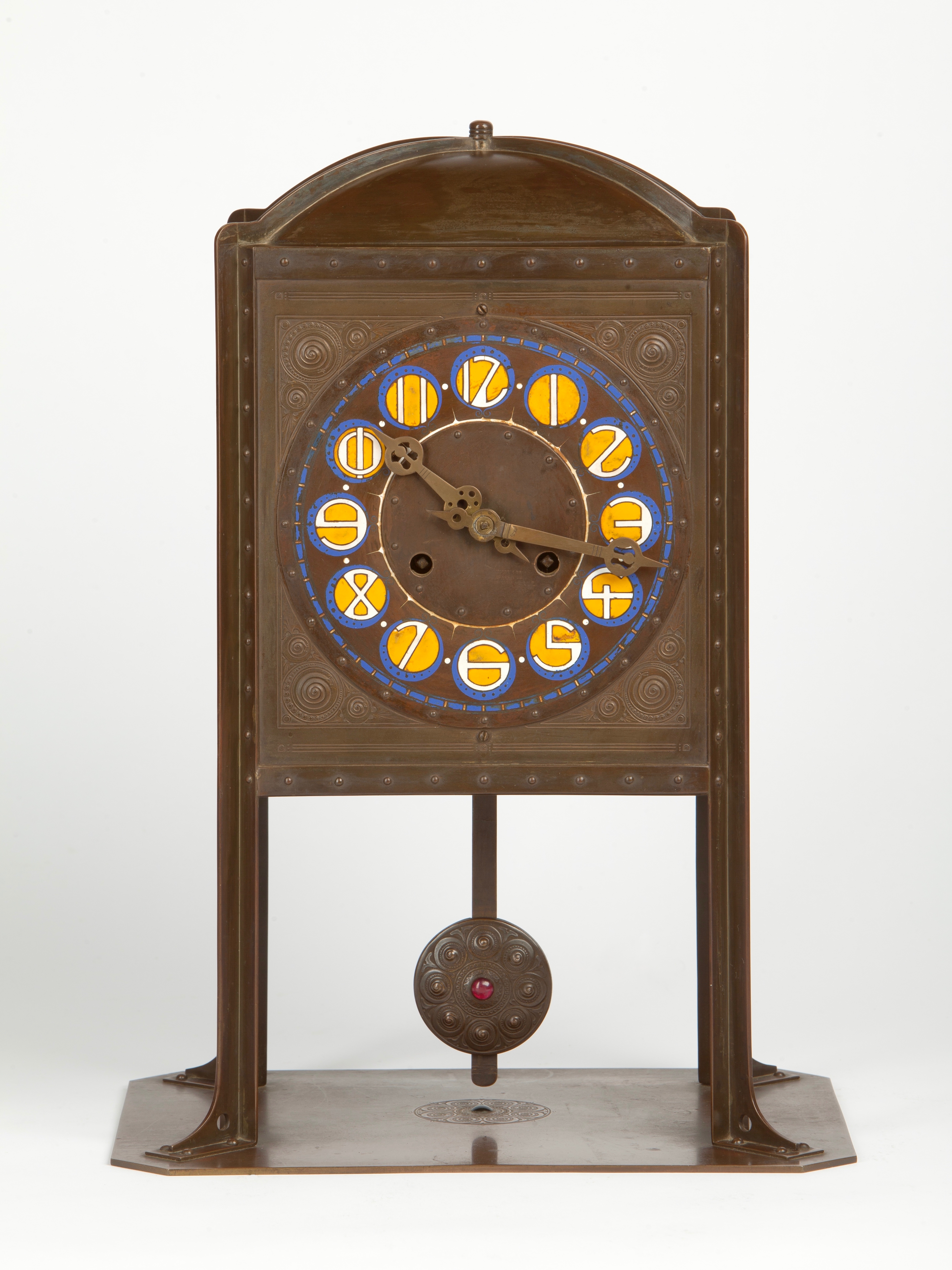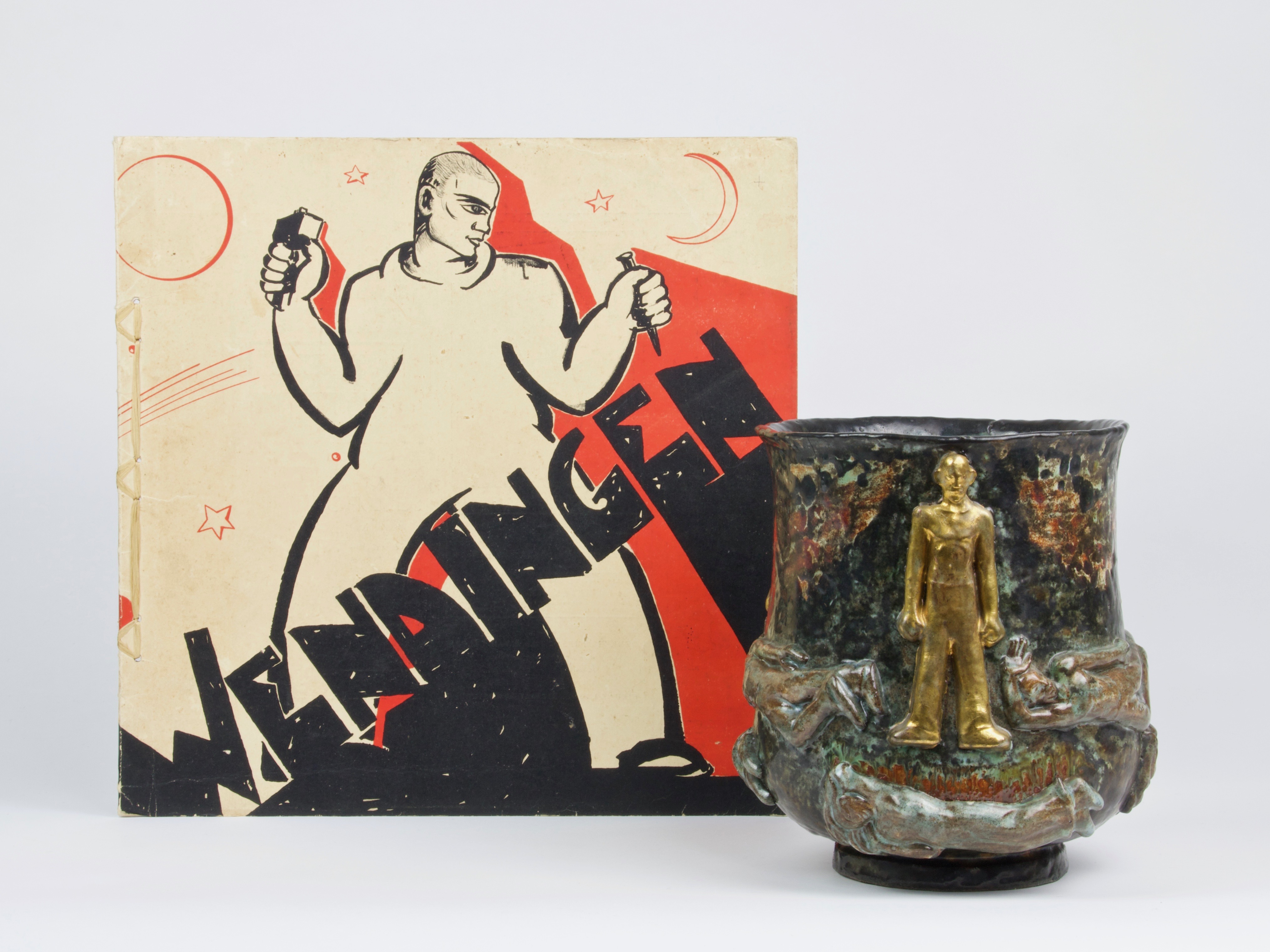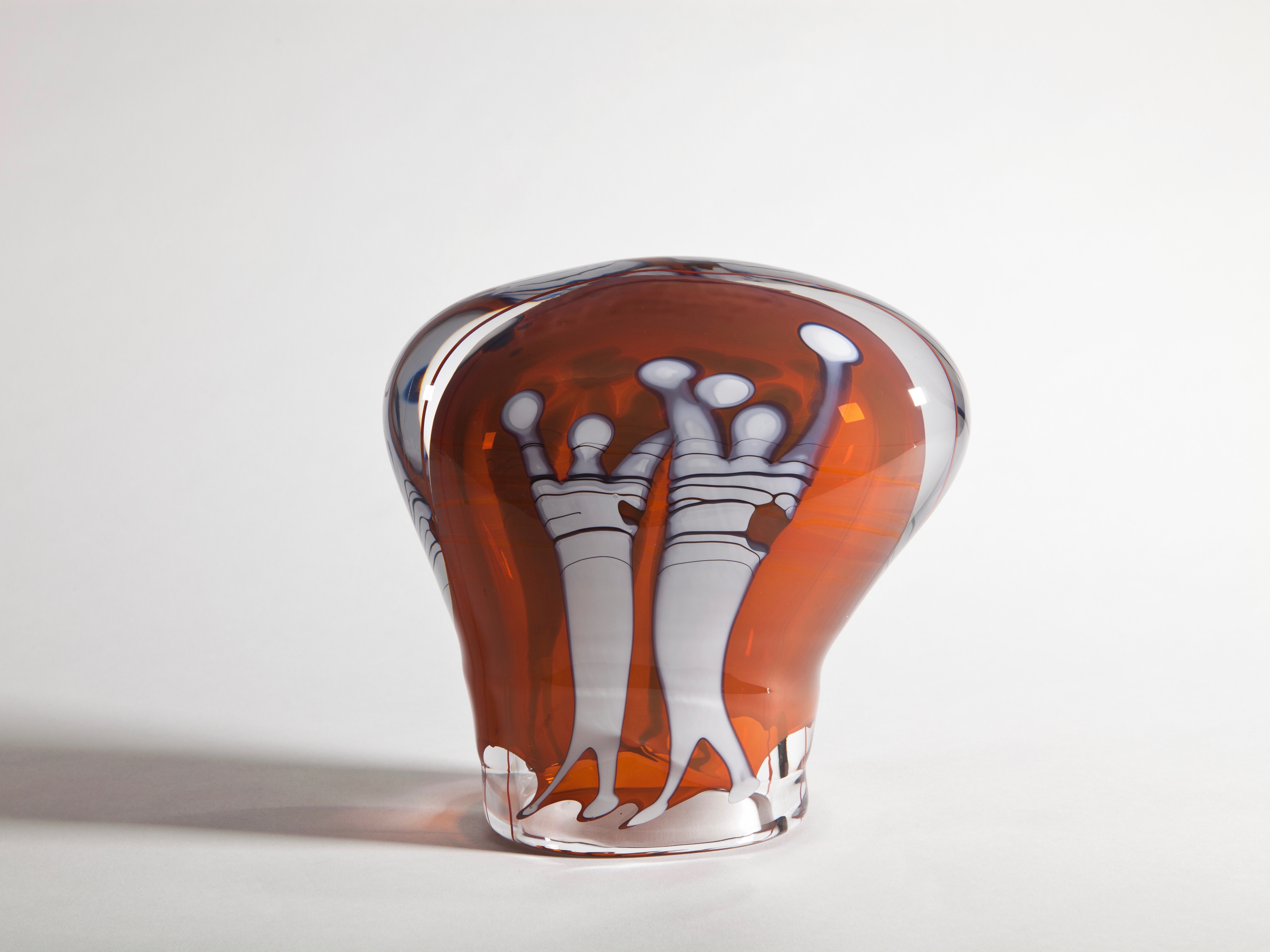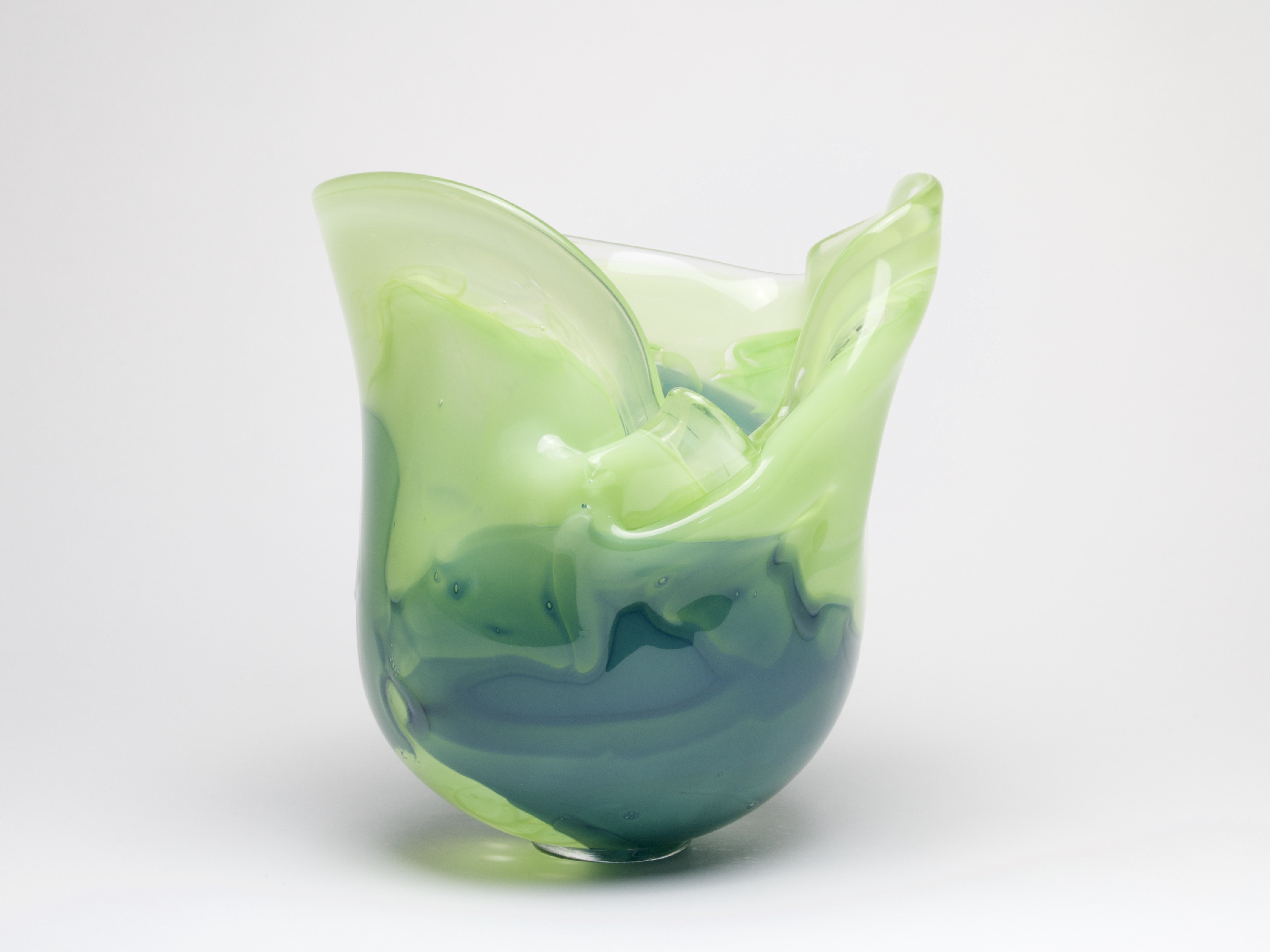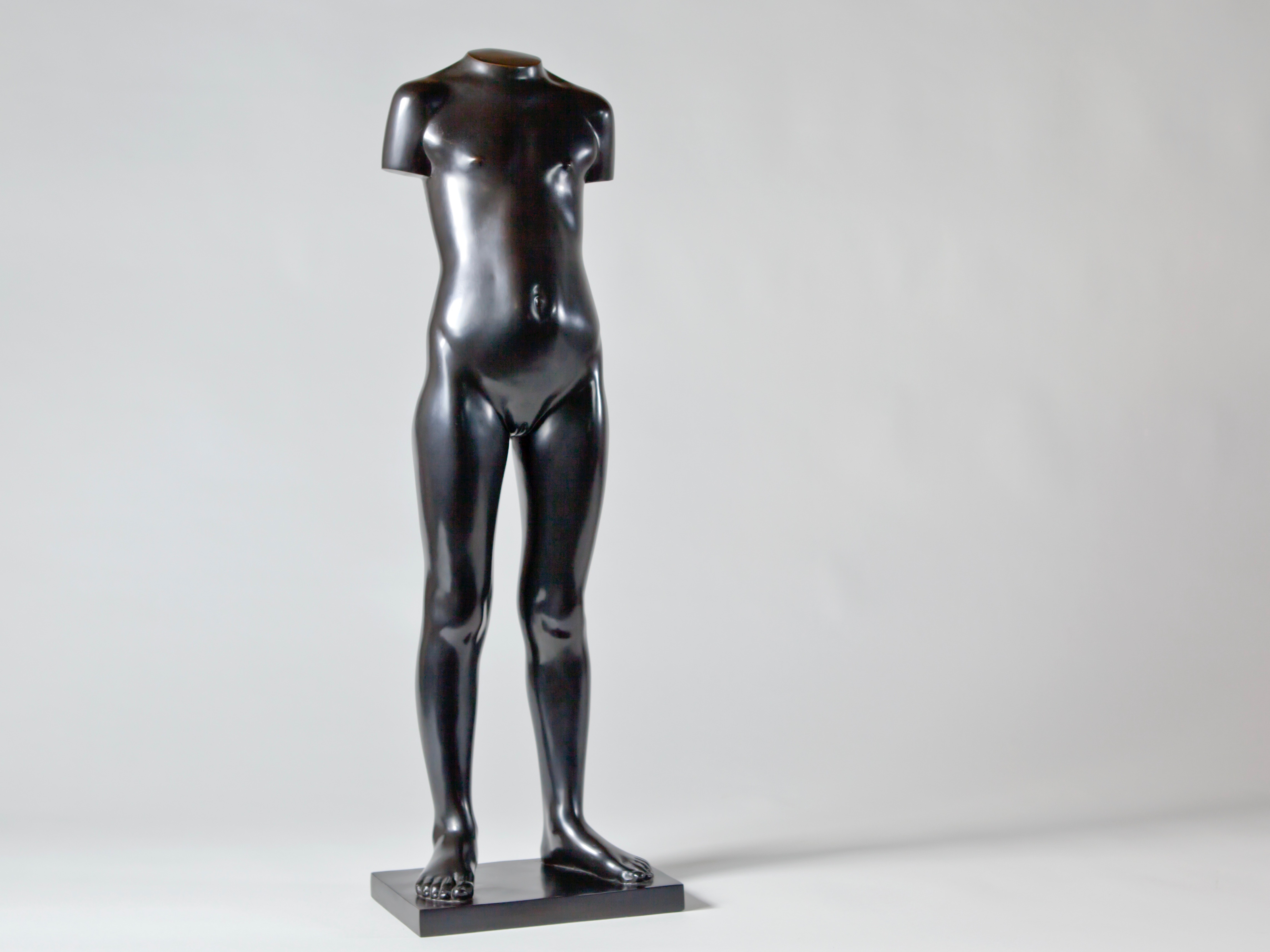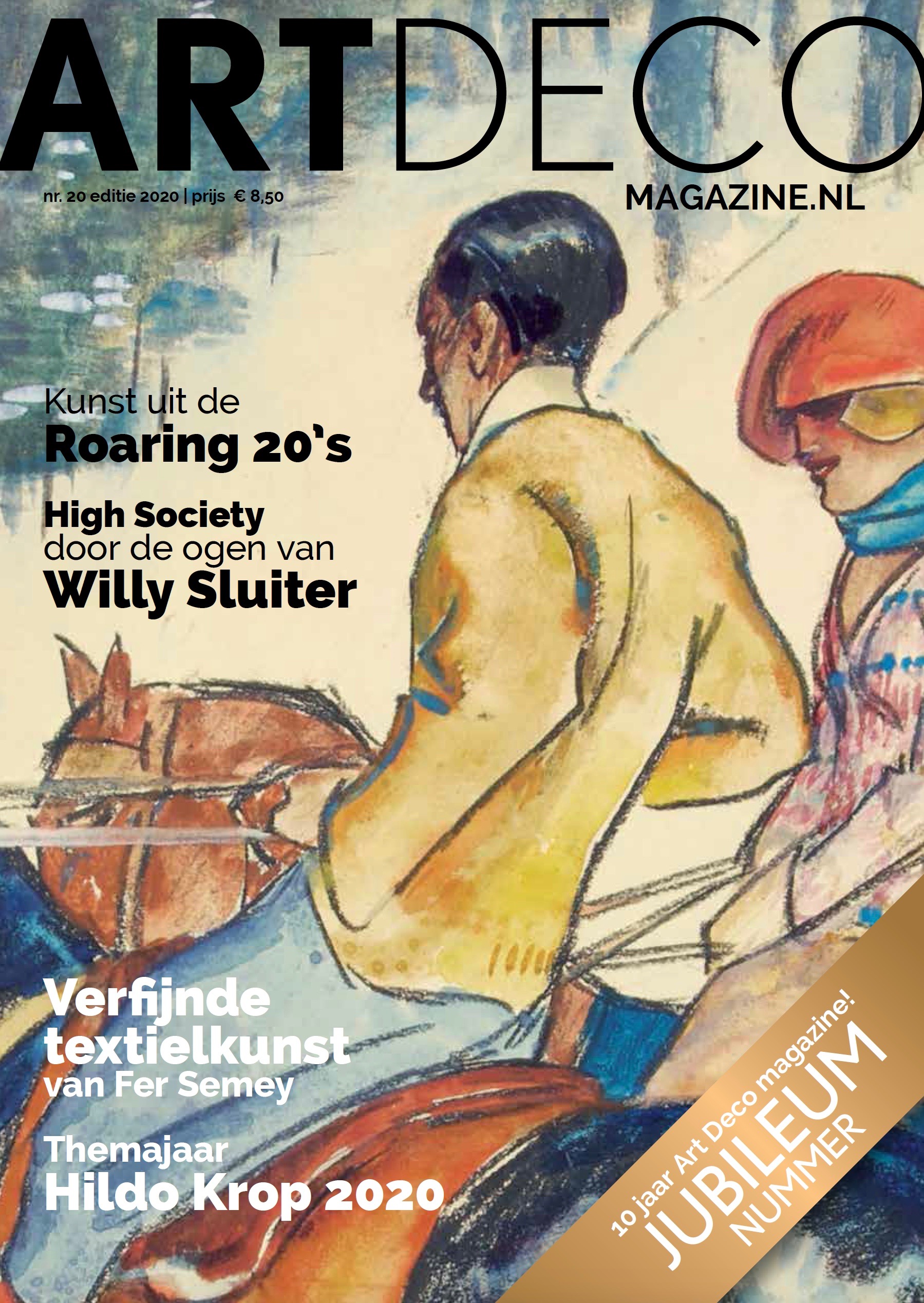Modern design around 1900: Clocks from Berlage to Stoffels
Around 1900, the innovations in design and architecture take flight. It is the Art Nouveau era. In the Netherlands, under the influence of the ideas of architect and designer Hendrik Peter Berlage, a sober and rationalistic variant arises: ‘de Nieuwe Kunst’ (the New Art). In this article we zoom in on the design of metal clocks from the ‘Nieuwe Kunst’ period. The most important designers of these clocks were Berlage, Jan Eisenloeffel and Cornelis Stoffels. Around the turn of the century, all three of them were affiliated with the Amstelhoek firm in a different capacity. Berlage as co-founder of ‘t Binnenhuis, which sold objects from Amstelhoek, Eisenloeffel as artistic director of the metal workshop and Stoffels as a gifted artisan who mastered many techniques. It is therefore not surprising that there are similarities between the designs of these three artists. Yet each of these ‘Nieuwe Kunst’ designers also has its own style characteristics.
A complete clock set, made around 1900 at the Amsterdam firm Amstelhoek, is rare. The clock and the two flanking candelabra have a monumental shape. The objects are made up from flat brass plates, that have been shaped and connected to each other with decorative rows of rivets. The clock has a red copper dial with enamelled Roman numerals; the cabinet has an ornament with a moonstone in the center. The clock is signed at the back with the manufacturer’s mark of Amstelhoek.
Rijksmuseum
An identical set – with the only difference that the clock contains a red stone – is part of the collection of the Rijksmuseum in Amsterdam. The clock set, the design of which is attributed to H.P. Berlage, is featured in the catalogue Art Nouveau in the Rijksmuseum and on the museum’s website. The description emphasizes the characteristic design style and the decorative use of rivets: “The design of this set is sober and rational, the distinctive style of the influential Dutch architect Berlage. Connecting parts, such as rivets, are clearly visible and accentuate both the construction and the shape. The wide feet resemble the base of the Eiffel Tower, completed in 1889, which was the leading example of engineering at the time.’
Berlage as a designer of metalwork
Around the turn of the last century, Berlage was a key figure in the field of Dutch applied art. As architect of the Beurs van Berlage in Amsterdam (building period: 1898-1903) he had a lot of craftsmen and designers involved in this ‘Gesamtkunstwerk’. In 1900 he was, together with W.C. Hoeker en Jac. van den Bosch, co-founder of ‘t Binnenhuis. This Amsterdam-based home furnishing firm supplied everything for the interior to well-to-do clientele, varying from furniture and carpets to lamps, clocks and tableware. Berlage himself was one of the designers of furniture and metalwork. His progressive business partner Hoeker, who was a goldsmith and owner of jeweller firm Hoeker & Zoon, had founded the Amstelhoek ceramics workshop in 1897, of which products were also included the collection of ‘t Binnenhuis. In 1899 Amstelhoek was expanded with a metal department for modern utensils, of which Jan Eisenloeffel was in charge until his departure in 1902.
Amstelhoek
Most of the metal objects that were manufactured at Amstelhoek were designed by Eisenloeffel. Amstelhoek also possibly executed metalwork designed by Berlage in the period of the founding of ‘t Binnenhuis. Unfortunately, the Amstelhoek’s products were not signed with a designer’s mark, but only with a manufacturer’s mark: the monogram AH. The idealistic Hoeker was of the opinion that every product was the result of joint labour and that this collaboration was honoured by applying only the manufacturer’s mark. That now makes it more difficult to show which pieces were designed by whom. Also, comparisons of style characteristics of the various designers, surviving works and historical documentation do not provide a clear answer.
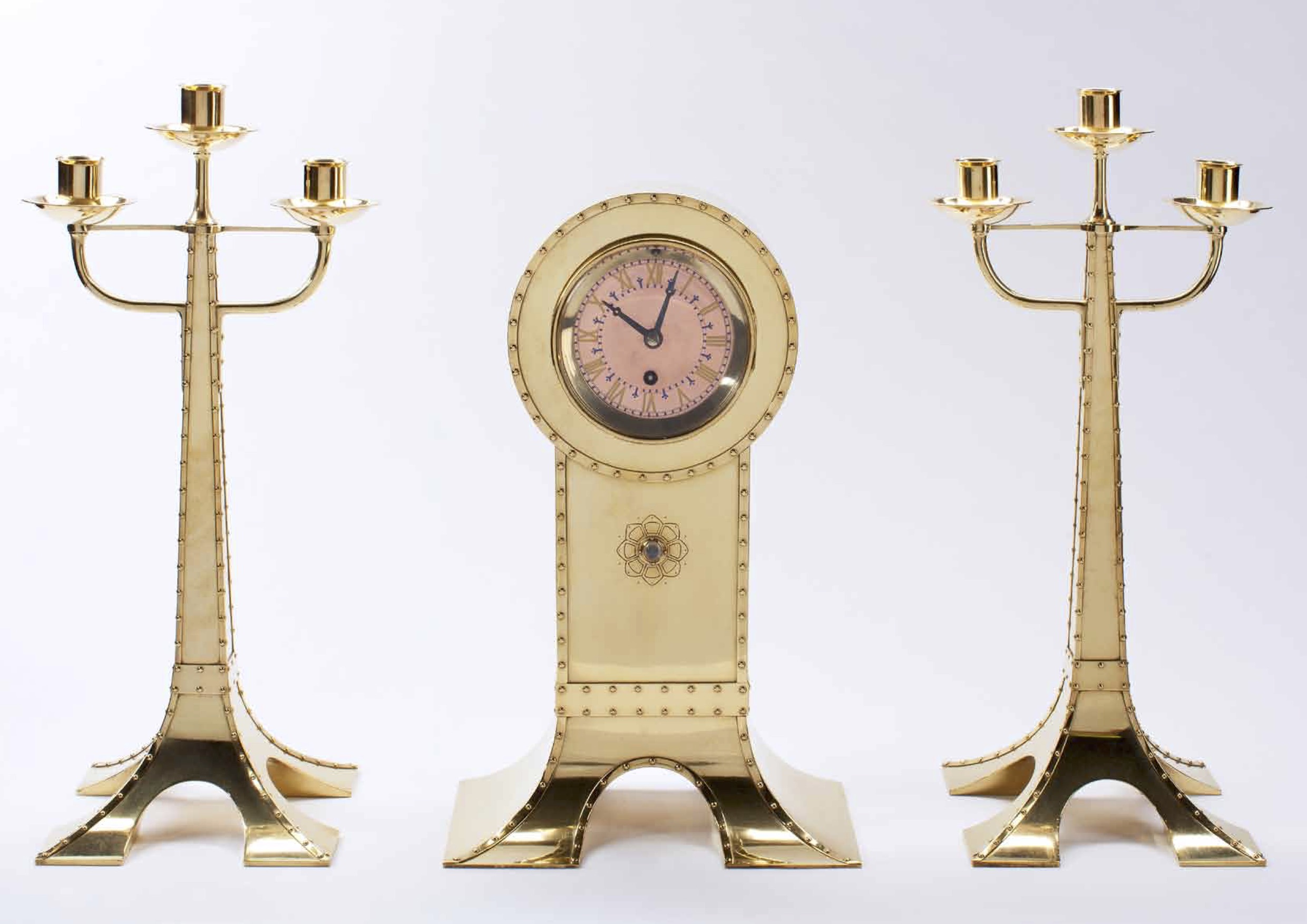
The rivets of Berlage
The clocks by Berlage have, as befits an architect, a monumental shape. Both Berlage and Eisenloeffel – who was inspired by the Berlage’s ideas about form – emphasized the construction of the object. Functional elements such as rivets were used as a decorative element. An important difference between the designs of these artists is the number of rivets used. In Eisenloeffel’s designs no more rivets than necessary for the construction were used, but in Berlage’s designs sometimes entire decorative rows of rivets were used. This can be clearly seen on the earliest known photograph of a clock set designed by Berlage. This photograph was part of the album ‘Hollandsche Kunst’ (Dutch Art) by Van Nelle. This coffee- and tea factory published a series of collectable pictures in 1902, for which the accompanying collectors' album was appeared in 1903. The cabinet of the depicted Berlage clock was bordered, so to say, with an edge of folded metal, secured with a row of rivets arranged quite close to each other. The construction has become a decoration. Just like the clock set above, the upper part of the clock has a round shape and the bottom part of the cabinet is slightly flared. The round shape and the characteristic use of the decorative border of rivets are also visible in two Berlage clocks in the collection of the Gemeentemuseum in The Hague and the Drents Museum. These clocks were made in the metal workshop Becht & Dyserinck. Most of the metalwork designed at ‘t Binnenhuis was manufactured here. This metalwork is a bit larger than that of Amstelhoek. Both clocks are marked with metal plates from both the manufacturer and ‘t Binnenhuis.
Stoffels at Amstelhoek
Around 1900, craftsman Cornelis Stoffels also had designer aspirations. It is unknown to what extent he could express this at Amstelhoek. In art historical literature it is assumed that Stoffels did not yet design in his Amstelhoek period. A descendant of Stoffels has a different opinion. Whereas Berlage (as innovator in the design) and Eisenloeffel (as artistic director of the metal department of Amstelhoek) are the big names of the ‘Nieuwe Kunst’, Stoffels could have developed himself artistically within the Amstelhoek collective. As a skilled manufacturer at Amstelhoek, he was familiar with the design ideas of Eisenloeffel and Berlage. Moreover, he knew the possibilities of the material like no other and he mastered a range of techniques.
Dissatisfaction
When Eissenloeffel leaves Amstelhoek in 1902 – dissatisfied about the fact that he does not receive individual credits as a designer – the metal department is led by Stoffels for several months. His descendant is convinced that Stoffels not only executed existing designs during that period, but also designed new models himself. Eventually Stoffels also leaves Amstelhoek to set up his own company together with Eisenloeffel, which they call Stoffels & Co. It is possible that this name was chosen to bypass an anti-competition clause of the much more famous Eisenloeffel. The firm Stoffels & Co is short-lived. It lacks retailers and marketing budget.
Onder den Sint-Maarten
Amstelhoek goes down as well. In 1903 the firm goes bankrupt. The Onder den Sint-Maarten firm, founded in 1900 as a furniture factory, takes over the metal workshop and the stocks from the bankrupt inventory. Stoffels is asked to be a designer. In his formal language, Stoffels is a follower of Eisenloeffel and Berlage. If you look at his designs for clocks, he seems to have taken certain forms directly from his two examples. He uses rivets almost in the same manner as Berlage. But often he uses much richer decoration. Although the clocks below, which he made for Onder den Sint-Maarten, clearly show similarities with the work of his inspirators, they look fuller and busier. Schooled in flat ornament and a master of techniques, he chooses to decorate his clocks with stylized natural motifs and linear decors, that are engraved in the metal, embossed, ajour sawn and applied in enamel. He also sometimes lavishly uses coloured stones and glass. Stoffels remains affiliated with Onder den Sint-Maarten until 1906. Around that time the popularity of the ‘Nieuwe Kunst’ starts to wane. The factory gradually reduces the production of ‘Nieuwe Kunst’ furniture and metalwork.
Close ties
The clocks of Berlage, Eisenloeffel and Stoffels are exemplary of the design innovations between 1900 and 1905. The firms to which they were affiliated, ‘t Binnenhuis, Amstelhoek and Onder den Sint-Maarten, maintained close ties and looked at the way the other was conducting their business. Where the design idea of one ended and that of the other begun cannot be said with certainty. What makes the case even more complicated is that in 1902 the companies entered into an agreement to take each other's products on consignment and into production. Perhaps further investigation can provide more clarity. But the fact that Amstelhoek did not honour its designer more than its manufacturers does not help.
Text: Belinda Visser
Photographs: Dennis A-Tjak
© Kunstconsult – 20th century art | objects
Reproduction and distribution of this text is only allowed with correct reference.
